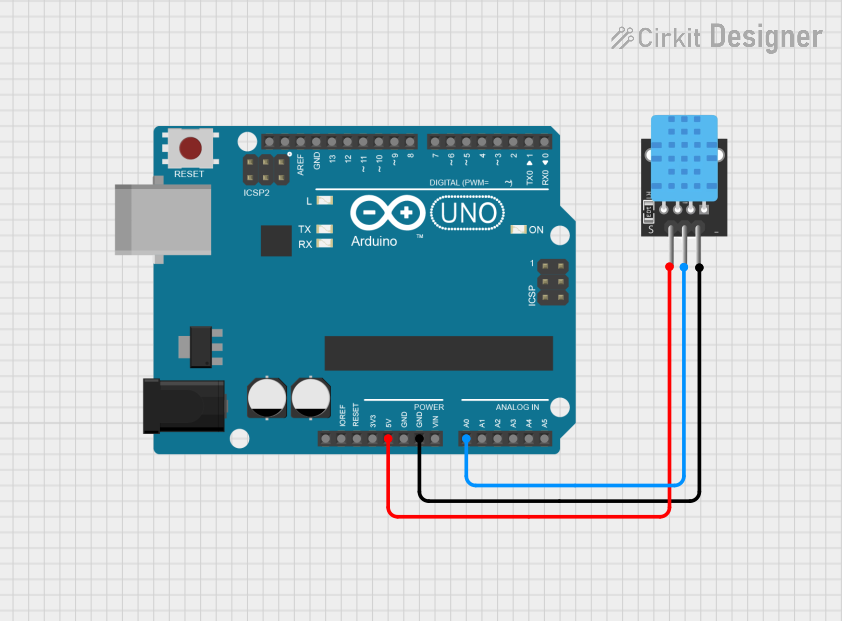
Arduino UNO with DHT11 Temperature and Humidity Sensor

Circuit Documentation
Summary of the Circuit
This document describes a simple circuit that consists of an Arduino UNO microcontroller board and a KY-015 DHT11 temperature and humidity sensor module. The Arduino UNO is used as the central processing unit to read data from the DHT11 sensor and potentially perform actions based on the sensor readings. The circuit is powered by the Arduino UNO's 5V output, which also powers the DHT11 sensor. The ground connections are shared between the two components to complete the circuit. The sensor's data pin is connected to one of the Arduino's analog input pins for data communication.
Component List
Arduino UNO
- Description: A microcontroller board based on the ATmega328P. It has 14 digital input/output pins, 6 analog inputs, a 16 MHz quartz crystal, a USB connection, a power jack, an ICSP header, and a reset button.
- Purpose: Acts as the central processing unit for controlling the DHT11 sensor and processing its data.
KY-015 DHT11 Temperature and Humidity Sensor Module
- Description: A basic, low-cost digital temperature and humidity sensor. It uses a capacitive humidity sensor and a thermistor to measure the surrounding air and outputs a digital signal on the data pin.
- Purpose: Provides ambient temperature and humidity readings to the Arduino UNO.
Wiring Details
Arduino UNO
- 5V: Provides power to the DHT11 sensor.
- GND: Common ground for the circuit.
- A0: Receives the digital signal from the DHT11 sensor's data pin.
KY-015 DHT11 Sensor Module
- 5V: Receives power from the Arduino UNO's 5V pin.
- GND: Connected to the common ground in the circuit.
- S (Signal): Sends the digital signal to the Arduino UNO's A0 pin.
Documented Code
The following code is intended to run on the Arduino UNO microcontroller:
void setup() {
// put your setup code here, to run once:
}
void loop() {
// put your main code here, to run repeatedly:
}
The code provided is a template with empty setup() and loop() functions. To fully utilize the DHT11 sensor, code needs to be added to initialize the sensor and read data from it within these functions. This typically involves using a library designed for the DHT11 sensor to simplify the process of reading temperature and humidity data.
Note: The actual implementation code for the DHT11 sensor is not provided in this documentation. Users will need to include the appropriate library and write the code to read and process the sensor data.